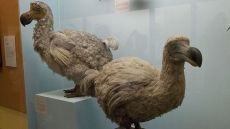VICTORIA — Ten years after an unusually scalloped clam was dragged up from the ocean floor off northern Vancouver Island, the tiny mollusk is making waves in the research world.
Melissa Frey, curator of invertebrates at the Royal BC Museum, was cataloguing a number of species about four years ago when she noticed something different about the tiny clam.
"I looked at the unusual scalloping and I thought this was definitely special," she said in an interview Wednesday.
"It's unusual enough and I compared it to everything that has previously been described on the West Coast of North America ... and it didn't match up to anything that was there."
To the untrained eye, the clam doesn't look much different than others. It's the same chalky white colour as many other clams and about the same length and height as a walnut in the shell.
Frey asked for the opinion of Graham Oliver, a world expert on bivalves at the National Museum of Wales, who confirmed it was a new species.
The two recently co-wrote an article on the clam, which has been published in the journal Zootaxa.
Only one of the clams has ever been found, and she said researchers often don't like to publish new species descriptions based on one specimen.
"But in certain cases, when you're in a certain situation where the environment is so far away and it's not an area that we get to very often, and we don't know that much about the relative abundance of these animals.
"It was unusual enough to merit a species description based on one individual. My guess is there are more individuals out there."
The mollusk was found at a depth of about 1,000 metres by a Department of Fisheries and Oceans ship in 2004 and the museum received it a few years later. Millions of specimens are often deposited in museums around the world for long-term research and safe storage. There, experts have time to look over the collection.
Somewhere between 10 to 20 new species from the marine environment are recognized and described each year, Frey said.
Oliver picked the double name of the new species — ascetoaxinus quatsinoensis.
"Yeah, it's a mouthful isn't it," Frey said, laughing. "Could we pick something longer and more complicated?"
The first part of the name means curiously fashioned like an axe and the second part represents the area where the clam was found off B.C.'s Quatsino Sound.





